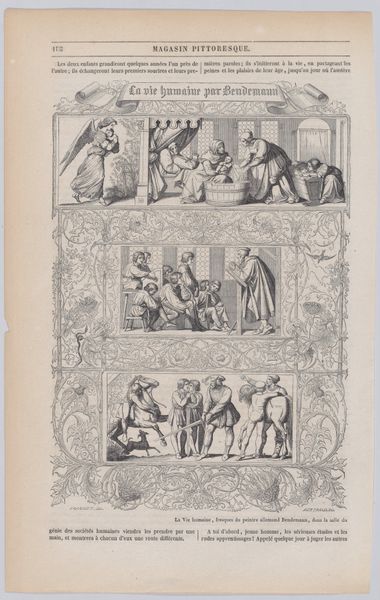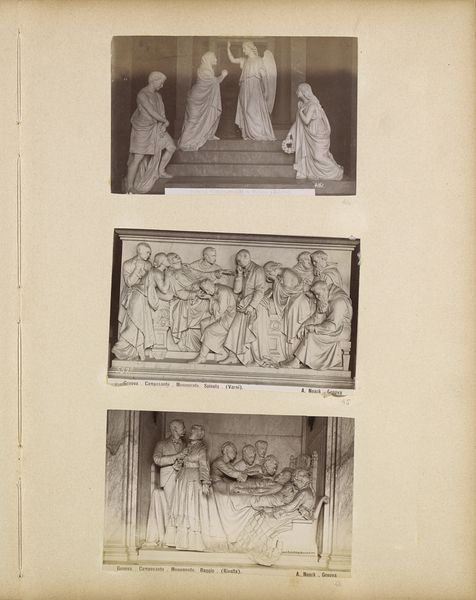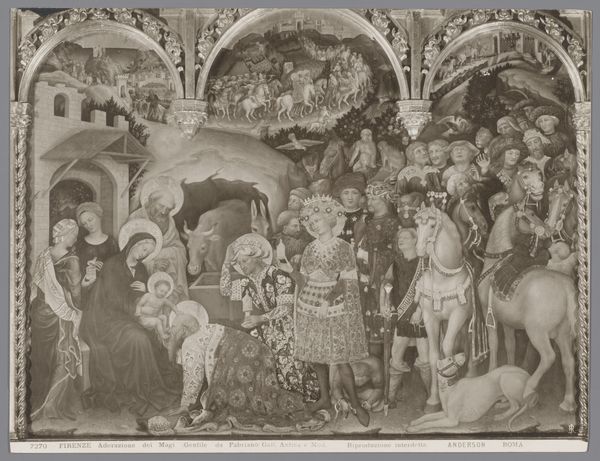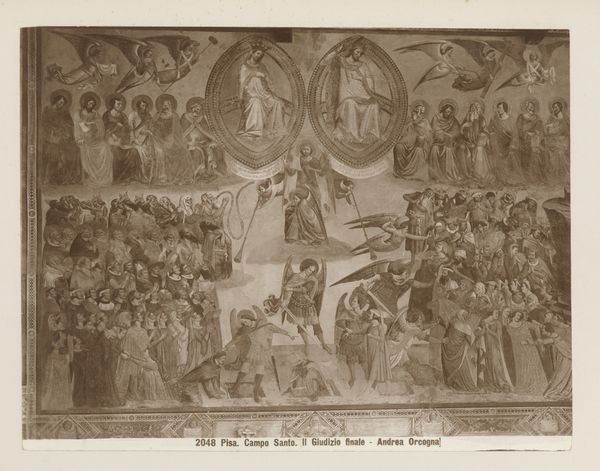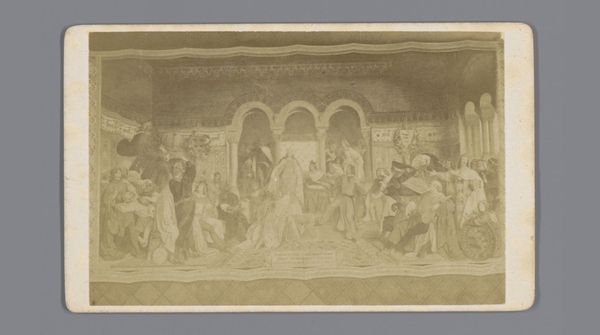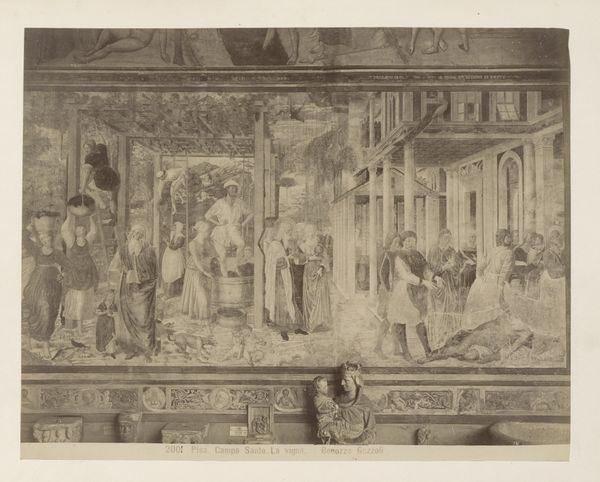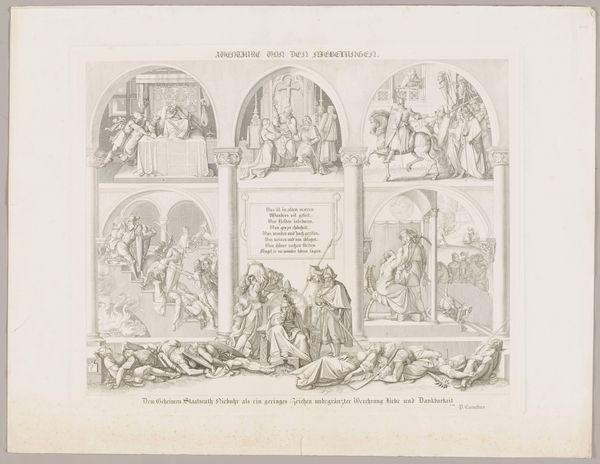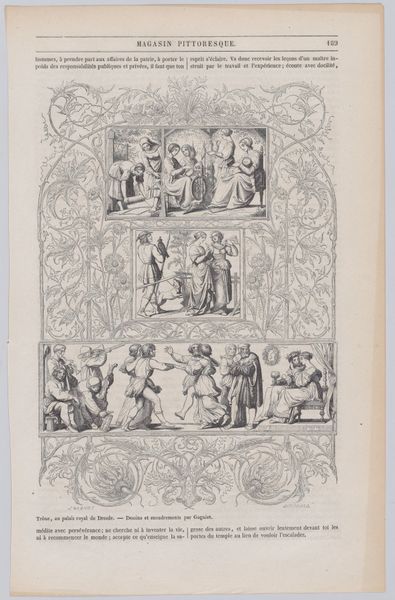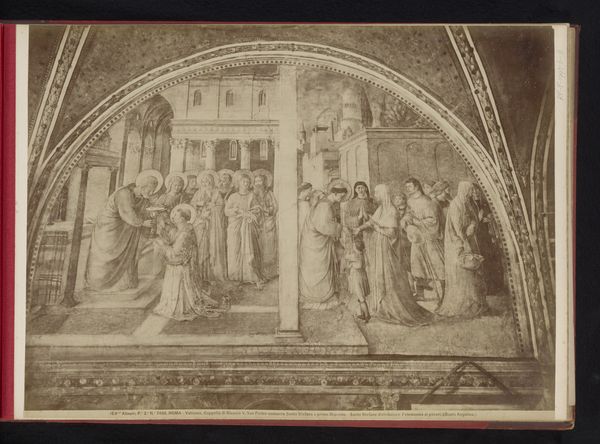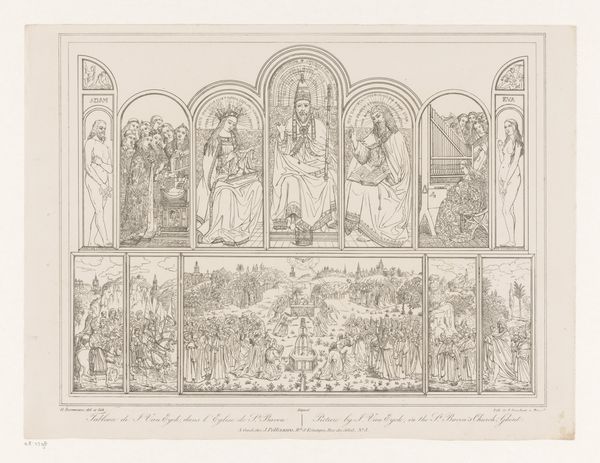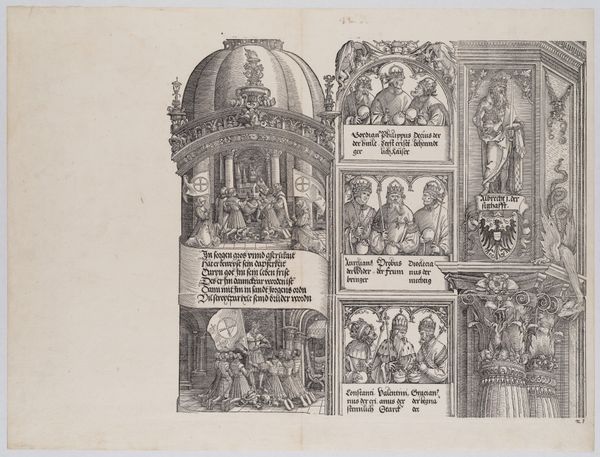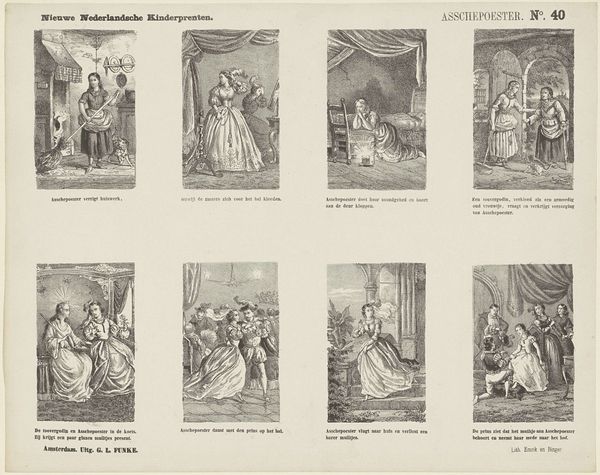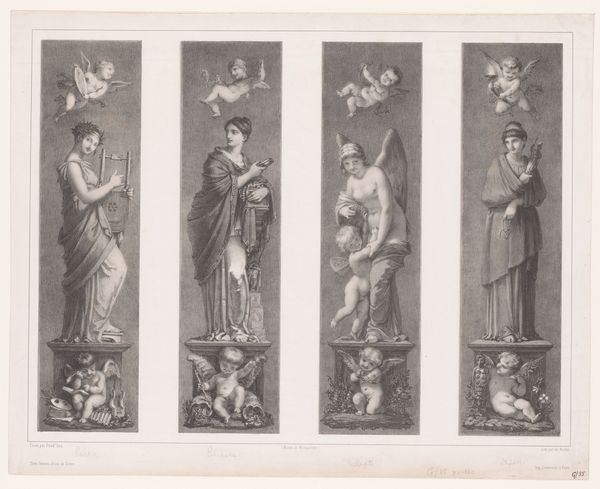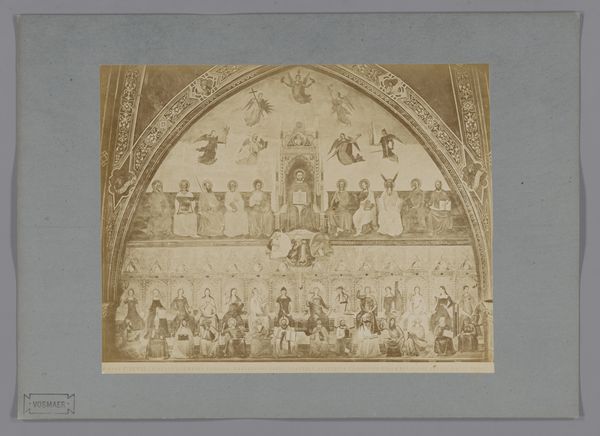
Fotoreproductie van de triptiek Hemelvaart, Het oordeel, Verschijning van de Heilige Geest naar Fra Angelico in de Galleria Corsini te Rome, Italië 1857 - 1875
0:00
0:00
print, fresco, photography, gelatin-silver-print
#
narrative-art
# print
#
fresco
#
photography
#
gelatin-silver-print
#
history-painting
#
italian-renaissance
Dimensions: height 202 mm, width 259 mm
Copyright: Rijks Museum: Open Domain
Editor: So, here we have a photograph by James Anderson, dating from 1857 to 1875. It’s a gelatin silver print of a triptych by Fra Angelico, depicting the Ascension, the Last Judgment, and the Descent of the Holy Spirit. It feels strange to see a Renaissance fresco captured in this way… What story does this photograph tell beyond the religious scenes it depicts? Curator: That’s a keen observation! We're not just looking at religious art here; we're seeing a nineteenth-century interpretation and dissemination of it. Photography, then, served to democratize access to masterpieces, removing them from the confines of Roman galleries like the Corsini and placing them in albums and studies. Think about the power dynamics at play: Anderson, an English photographer, capturing and circulating Italian Renaissance art for presumably a wider, potentially international audience. Does the photographic process change the reception of the original work? Editor: It definitely makes it more accessible. Did this type of photographic reproduction influence how artists, especially painters, saw and understood earlier art? Curator: Absolutely. Consider how this dissemination might have shaped the artistic landscape of the time, both enabling a fascination and possibly contributing to a sense of distance or detachment from these original works of art. How do you feel it changes the meaning to move it from a fresco on a wall, to a photographic print? Editor: It feels like a removal of the sacred atmosphere somehow, making it a document, rather than an object of worship. I hadn't thought about it as an active interpretation of cultural property before! Curator: Precisely! It makes you think about the complex relationship between art, technology, and cultural appropriation in the 19th Century.
Comments
No comments
Be the first to comment and join the conversation on the ultimate creative platform.
